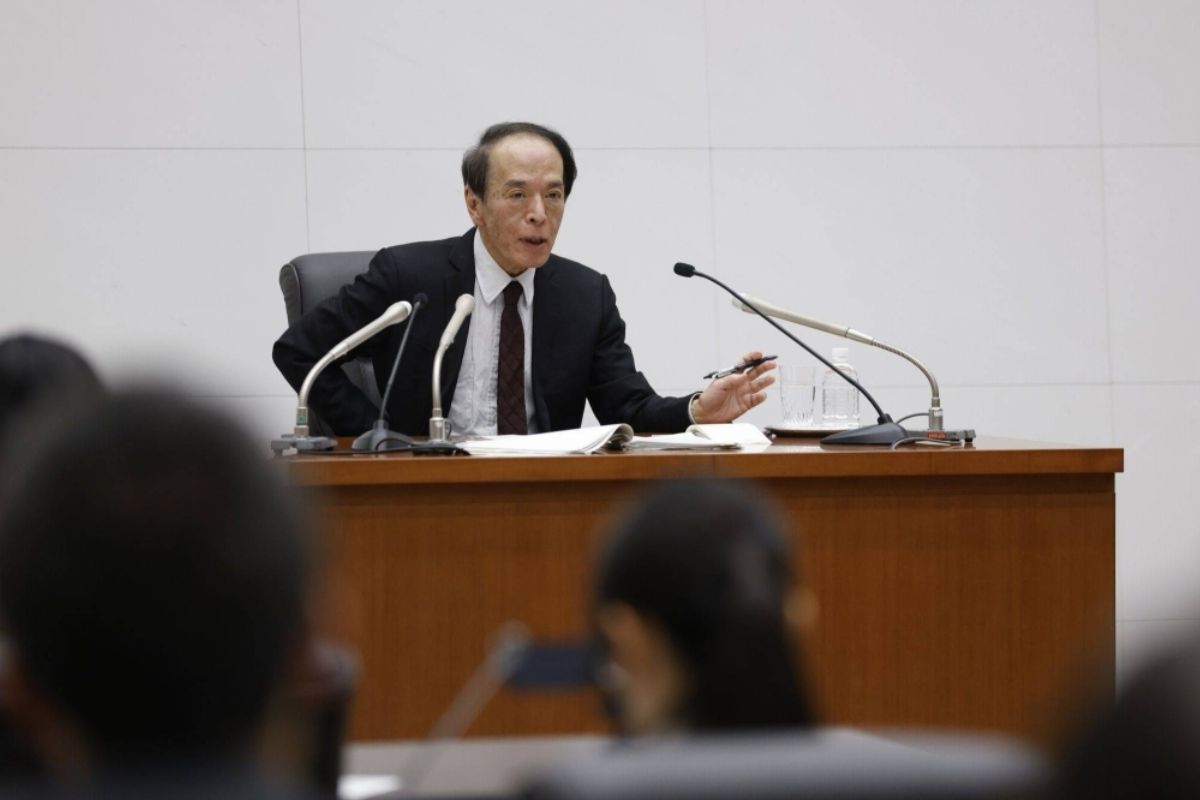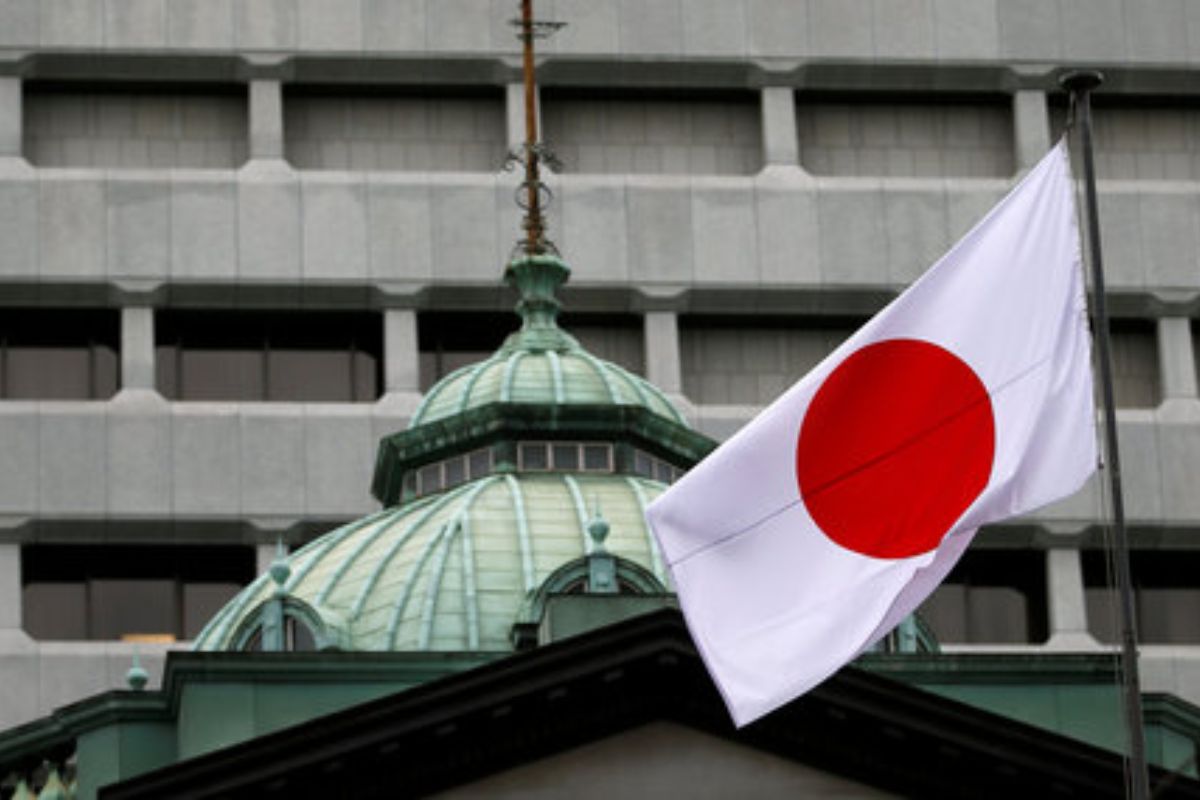OECD Urges Japan’s Central Bank: In a recent report, the Organisation for Economic Co-operation and Development (OECD) has urged Japan’s central bank, the Bank of Japan (BOJ), to consider a gradual rate increase. This recommendation comes at a pivotal moment for Japan’s monetary policy, as the country grapples with the challenges of an aging population and sluggish economic growth.
The OECD’s call for greater flexibility in yield curve control reflects a nuanced understanding of the BOJ’s cautious approach and its need for policy adjustments. However, as the report highlights, vigilance is crucial to mitigate potential spillovers on financial stability.
With the OECD’s endorsement, the question arises: will the BOJ take a step towards normalizing its monetary policy? The answer to this question holds significant implications for Japan’s economy and the global financial landscape.
Key Takeaways
- OECD recommends BOJ to gradually increase interest rates based on inflation stabilization and sustained wage growth.
- The report emphasizes the pivotal moment for Japan’s monetary policy, highlighting the need for a gradual increase in short-term rates.
- Greater flexibility in Yield Curve Control (YCC) is a pressing concern, and the current approach may no longer be sustainable.
- The BOJ’s cautious approach and policy adjustments are recognized, reflecting confidence in their ability to adapt, but vigilance is needed to prevent potential spillovers on financial stability.
OECD Recommends Gradual Interest Rate Increase for the Bank of Japan (BOJ)
The Organisation for Economic Cooperation and Development (OECD) strongly advises the Bank of Japan (BOJ) to gradually increase interest rates, contingent upon the stabilization of inflation around the 2% target and the presence of sustained wage growth.
This recommendation comes as the OECD acknowledges the BOJ’s adjustments to its yield curve control (YCC) policy. However, the OECD highlights the potential challenges if inflation persists above the 2% target and global yields rise.
To address this, the OECD proposes enhancing YCC flexibility, potentially by adjusting the 10-year bond yield target or adopting a short-term yield target.
Also Read: Market Moves Unveiled: Japan’s Inflation, Central Bank Chess, and the Black Friday Litmus Test
The OECD’s call for a gradual increase in interest rates reflects a belief that such a move is necessary to support the economy and maintain price stability. It is a prudent approach that allows for adjustments based on the achievement of key targets and economic conditions.
OECD’s 2024 Report Highlights Pivotal Moment for Japan’s Monetary Policy
Japan’s monetary policy is facing a pivotal moment as highlighted by the OECD’s 2024 report, which emphasizes the need for the Bank of Japan (BOJ) to consider a gradual increase in short-term rates. This report signifies a critical juncture for Japan’s economy, with the potential for achieving a durable 2% inflation target becoming more likely than ever before.
To navigate this pivotal moment successfully, the BOJ should take into account the following factors:
- Inflation stability: The BOJ should ensure that inflation remains stable around the 2% target, indicating a healthy economy.
- Accelerated wage growth: Increasing wages would boost consumer spending and drive economic growth, supporting the need for a gradual rate increase.
- Closure of the output gap: Closing the output gap, the difference between actual and potential output, would indicate a strong economy and provide a favorable environment for rate hikes.
- Long-term sustainability: The BOJ should ensure that any rate increase is gradual to avoid disrupting the fragile recovery and maintain long-term sustainability.
Call for Greater Flexibility in Yield Curve Control
Greater flexibility in implementing yield curve control has become a pressing concern for Japan’s central bank. The OECD’s call for such flexibility is justified given the changing economic landscape.
With inflation consistently exceeding 2% for an extended period, it is time for the Bank of Japan (BOJ) to reevaluate its ultra-loose monetary policy. The current approach of targeting short-term interest rates and maintaining a steep yield curve may no longer be sustainable.
As market expectations grow for a shift in short-term interest rates from negative territory, the BOJ needs to consider a more gradual rise in rates based on sustained inflation and wage dynamics. This would allow for a smoother transition and help mitigate any potential shocks to the economy.
Ultimately, greater flexibility in yield curve control is necessary to ensure the effectiveness and credibility of Japan’s monetary policy.
Recognition of BOJ’s Cautious Approach and Policy Adjustments
Given the changing economic landscape and the need for a more sustainable monetary policy, it is crucial to recognize the Bank of Japan’s cautious approach and recent policy adjustments.
The BOJ’s steps to adjust Yield Curve Control (YCC) and its commitment to maintaining ultra-loose policy settings demonstrate a data-driven approach that prioritizes evidence of 2% inflation with lasting wage increases. This cautious approach acknowledges the challenges and uncertainties in achieving the desired inflation target.
The OECD’s recognition of the central bank’s cautious approach is warranted, as it reflects a prudent stance in the face of slowing price growth. Moreover, the OECD’s optimism about a more lasting settlement of inflation around 2% shows confidence in the BOJ’s ability to adapt and adjust its policies accordingly.
Vigilance Needed for Potential Spillovers on Financial Stability
Caution must be exercised to prevent potential spillovers on financial stability, as the Bank of Japan contemplates a rate hike.
While a gradual increase in interest rates is being considered, it is crucial to remain vigilant and anticipate any adverse effects on both domestic and global financial systems.
The Organization for Economic Cooperation and Development (OECD) has rightly highlighted the need for such caution, given the current economic landscape in Japan.
As inflationary pressures persist and monetary policy challenges loom, any misstep in the rate adjustment process could have far-reaching consequences.
Therefore, it is imperative for the Bank of Japan to carefully assess the potential risks and implement appropriate measures to mitigate any negative spillover effects.
Conclusion Of OECD Urges Japan’s Central Bank
The OECD’s recommendation for a gradual interest rate increase by the Bank of Japan reflects the organization’s belief that Japan’s monetary policy is at a crucial juncture.
The call for greater flexibility in yield curve control acknowledges the need for adjustments, while also recognizing the BOJ’s cautious approach.
However, vigilance must be maintained to prevent potential spillovers on financial stability.
Overall, a gradual rate increase could help ensure a balanced and sustainable economic growth for Japan.
FAQs
Q1 What is Japan’s central bank quantitative easing?
A The Bank of Japan (BOJ), the central bank of Japan, has embarked on an extended period of unconventional monetary policy spanning decades. Since the late 1980s, the BOJ has implemented a stringent Keynesian approach, incorporating measures such as over 15 years of quantitative easing (QE). This strategy involves the acquisition of private assets to inject capital into businesses and support price levels.
Q2 Why has the Bank of Japan been unable to stimulate inflation in the economy?
A The Bank of Japan (BOJ) set a 2% inflation target to combat deflation and foster sustainable economic growth. However, challenges arose in achieving this goal, attributed to the impact of reduced international oil prices. Consequently, the BOJ found it necessary to implement additional measures in response to the prevailing circumstances.
Q3 Why Japan does not increase interest rates?
A Japan’s rationale behind this decision stemmed from concerns about the fragility of its economy, marked by initially feeble demand. The apprehension was that elevating interest rates would pose a threat to any modest economic growth achieved and would exacerbate challenges in servicing the country’s debt.




